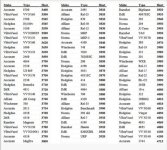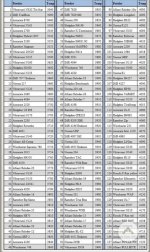What does powder burn rate tell you?
2.7 grains of Bullseye, #14 on the burn rate chart, is a hotter load tha 7 grains of Trail Boss, burn rate #22.
So how does burn rate relate to performance? Wouldn't volume chang be a better indicator of performances. How does burn rate relate to chamber pressure?
2.7 grains of Bullseye, #14 on the burn rate chart, is a hotter load tha 7 grains of Trail Boss, burn rate #22.
So how does burn rate relate to performance? Wouldn't volume chang be a better indicator of performances. How does burn rate relate to chamber pressure?


